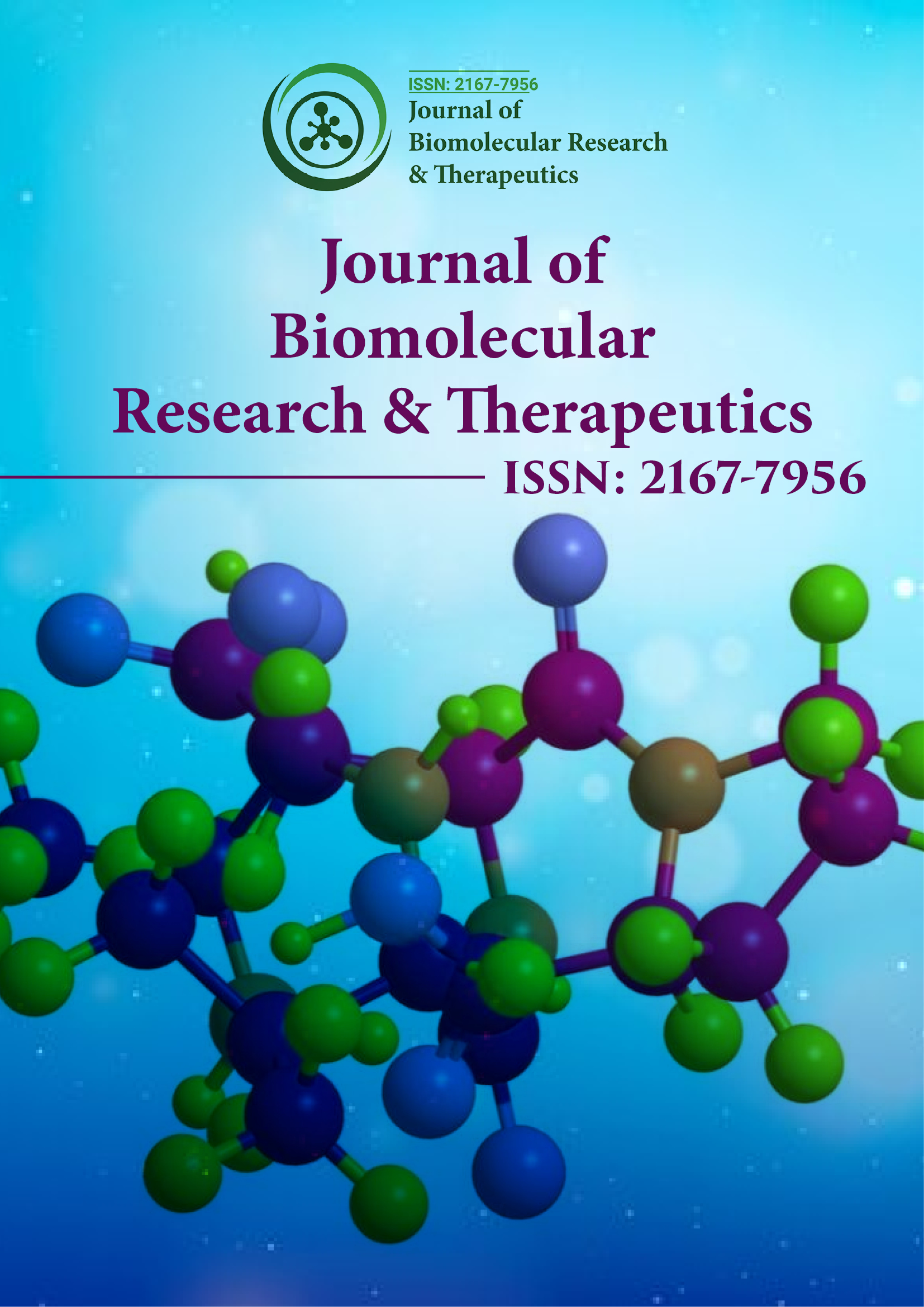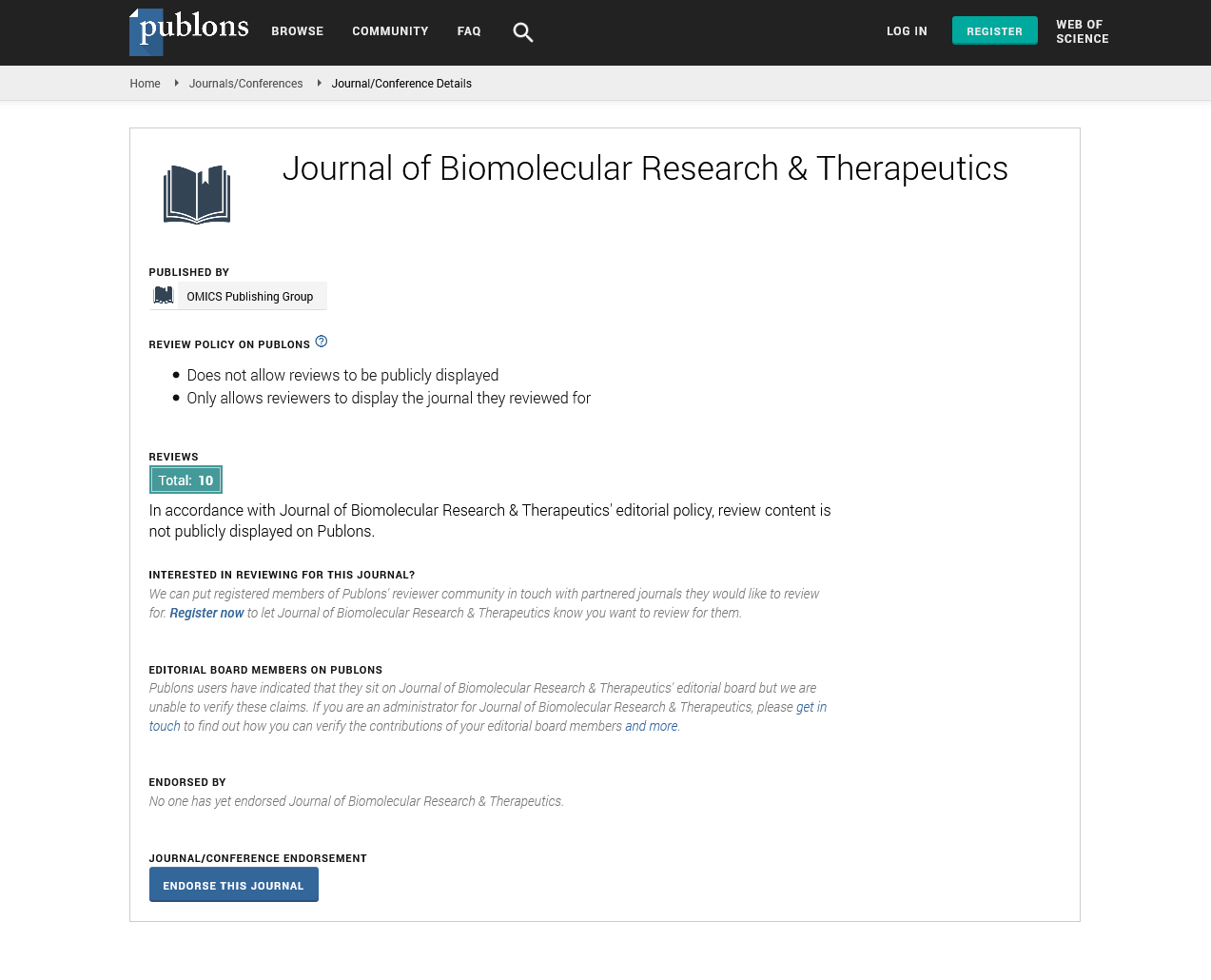PMC/PubMed Indexed Articles
Indexed In
- Open J Gate
- Genamics JournalSeek
- ResearchBible
- Electronic Journals Library
- RefSeek
- Hamdard University
- EBSCO A-Z
- OCLC- WorldCat
- SWB online catalog
- Virtual Library of Biology (vifabio)
- Publons
- Euro Pub
- Google Scholar
Useful Links
Share This Page
Journal Flyer

Open Access Journals
- Agri and Aquaculture
- Biochemistry
- Bioinformatics & Systems Biology
- Business & Management
- Chemistry
- Clinical Sciences
- Engineering
- Food & Nutrition
- General Science
- Genetics & Molecular Biology
- Immunology & Microbiology
- Medical Sciences
- Neuroscience & Psychology
- Nursing & Health Care
- Pharmaceutical Sciences
Tatiana Globus

Tatiana Globus
Research Associate Professor, Dept. of Electrical & Computer Engineering
University of Virginia, USA
Biography
Tatiana Globus received her M.S. degree in Electrical Engineering from Moscow Energy Institute in 1965 and a Ph.D. in Semiconductor Physics from Moscow Institute of Applied Physics in 1973. She has served on the faculty at UVA since 1993. She is a leading innovator in the field of terahertz/bio interactions opening the new field of terahertz vibrational spectroscopy of DNA and other biological materials. She uses experimental characterization, while developing computational modeling techniques to simulate THz spectroscopic signature of macromolecules such as DNA, RNA, and proteins. Her research interests have recently shifted in the direction of THz biosensing technology for environmental and medical applications. Dr. Globus co-founded Vibratess, LLC – a woman owned start-up, spun-off from University of Virginia, that was organized in January 2007 to develop and commercialize low-THz resonance spectroscopy technology for detecting, identifying, and characterizing biological macromolecules and microoeganisms.
Research Interest
Early research interests of Dr Globus included optical and electrical characterization and optimization of electronic and photonic materials and devices, uncooled photodetectors, photovoltaics and light-emitting diodes for the mid-infrared, and the development of infrared and terahertz (THz) sensors for environmental and medical applications. Her research encompasses the investigation of density of localized states and degradation phenomena in amorphous and polycrystalline silicon thin film transistors and photovoltaics, thin film electronic materials and structures. Among her most significant achievements in that early period were (i) Developing an interference optical technique for characterizing absorption spectra of thin film solid state materials including band gap defects spectroscopy; (ii) developing environmental sensor prototypes based on mid-infrared technology for gas monitoring in environmental control; (iii) investigating the instability and density of localized states in amorphous and polycrystalline silicon, thin film transistors and solar cells. Starting from 1997 Dr. Globus has been working on different aspects of sub-THz Spectroscopy of biological molecules and cells. Jointly with Professor Boris Gelmont, she organized a research group at the University of Virginia, Department of Electrical and Computer Engineering, to study interaction mechanisms between biological materials and radiation in the Terahertz spectral range. The efforts of the group are helping to open a new and very fruitful field of terahertz vibrational resonance spectroscopy of organic, biological, and artificial macromolecules. In parallel with experimental characterization, the group is involved in developing computational modeling techniques to study molecular dynamic (MD) relaxation processes and molecular recognition, and to predict THz spectroscopic signatures of large macromolecules of DNAs, RNAs, proteins and other molecular components of bacterial cells using energy minimization, normal mode analysis, and MD approaches. Vibrational resonance spectroscopy in the THz range is rapidly emerging technique for fingerprinting biological molecules and species with broad potential applications such as biomedicine or detection and identification of bio-targets. THz radiation interacts with low-frequency internal molecular vibrations involving the weakest hydrogen bonds and other weak interactions by exciting these vibrations. The subTHz/THz regions of absorption spectra of bio-molecules and species reveal these low frequency molecular motions as resonances, which can serve as fingerprints specific to molecules. The characteristic resonance frequencies of vibrational modes are unique for different biological objects, and can be used as their spectroscopic signatures. The uniqueness of THz bio-sensing technology of biological materials and structural elements for bio-molecular electronics opens potentially many environmental and biomedical applications including food safety, early diseases diagnostics, real time monitoring of biochemical processes and nanotechnology. The spectral range below 1 THz is especially attractive for practical applications because of low disturbance from liquid water or other solvents, and from water vapor absorption. A big advantage of THz spectroscopy is that it is an optical method and is nondestructive for living species. Dr. Globus' research addresses the key problems impeding further development of THz spectroscopy as a very sensitive and reliable technique for characterizing the specificity of spectroscopic signatures of complex molecules to perfect the use of THz spectroscopy for the fast and effective detection and identification of biomolecules and species. Specifically, Dr. Globus is working to miniaturize THz spectroscopic technology to allow for characterization of extremely small amounts of samples and for the better design of devices. Using a new approach that combines measurements with computational prediction, Dr. Globus' team was able to identify micro-RNA as the molecular components that mostly contribute to the signature observed for cancer cells. This approach, which is very general, can be used for molecular diagnostic of other difficult to detect cancers and probably other diseases.
Major Accomplishments
• Developing Terahertz Resonance Spectroscopy and instrumentation for sensing and fingerprinting biological materials (small quantities) with high sensitivity and discriminative capability.
• Developing Molecular Dynamic simulation technique to predict low energy vibrational movements in biological macromolecules and to study relaxation processes of atomic movements.

